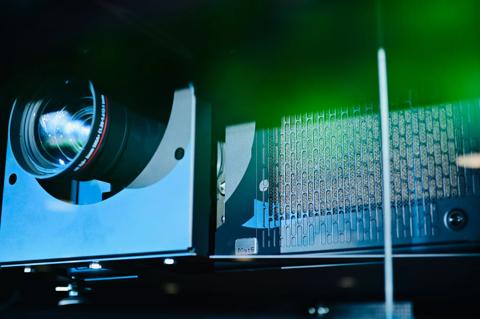Rückseite
23.11.2021
Projecting quality means projecting impact
Lesezeit 4 Min.
The very essence of projection mapping – in all its formats – is illusion. In movies, directors often talk about the “willing suspension of disbelief”. The challenge in projection mapping is to actively project an illusion onto an existing surface. And for that, quality projection is obviously essential for three main reasons: transporting the audience, providing reliability, and ensuring long-term investments.
In traditional mappings, buildings and monuments are used as a canvas to create a new projected reality. This often involves playing with the architectural outlines in order to seemingly morph buildings or to animate them with characters or graphic design.
In immersive experiences, the building’s inner contours are often dissolved to create a new environment. The recent craze for art-related experiences is a good example. In the best cases, the spectator can lose themselves in the experience, unable to pick apart the individual elements (notably, “Where are the projectors?”). Putting the visitor in the heart of the event fundamentally changes the perception and set-up.
The 4 elements of stunning projection
Download whitepaper
3D imaging naturally adds some extra challenges to the projection. The surfaces of 3D objects can vary in form, color, structure, etc. So how can you choose the right projection technology for your project? Everything you need to know to make sure your mapping is successful.
Download your whitepaperThe four key elements in projection are brightness, color, resolution, and processing. Each has an enormous influence on the overall impact.
- The brightness determines the ability to “cover” a building or surface with an image, transporting the spectator into the storyline. This is particularly true if there is any ambient light, such as streetlights or a sunset, to deal with.
- The color renders the projection livelier and more appealing. It also helps cover the color of the surface.
- The resolution multiplies the number of details, with greater resolution obviously improving the overall experience. Nobody wants to see individual pixels.
- The processing quality means that the content is played out smoothly, without visual artifacts and synchronized over many projectors to create a single canvas.
And then there are a few technical considerations that at first glance seem like low priorities but when multiplied by 100-plus units start to hold more value. These are things like weight, heat and power consumption.
Hitting the right spot with processing
The processing makes sure the live projection mapping goes as planned, and the content hits the imaging object on all the right spots. These devices ensure that the spectator sees a single image, rather than the actual patchwork that is being projected.
In one example of this, the cliffs of Tuwaiq in Saudi Arabia were used to project the logo of the Dakar rally in 2020. After viewing the 100mx100m mock-up, the client eventually opted for no less than a 440-meter-wide projection that required over 80 projectors. “Seeing those 84 projectors producing a single blended image on the cliff for the first time was a breathtaking and unforgettable moment,” according to Bilal Assidi, Martin Professional Sales Manager, Qiddiya.
Reliability: critical when going live
Mapping projects are live events, even if they can be repeated. Hundreds – and sometimes up to tens of thousands – of people turn up and expect a show. In this context, there is zero room for false starts or drops. The projectors and systems must process and deliver fantastically complicated shows impeccably. And if the show is intended to run over a period time, such as illuminating castles or villages over a summer season, they must be totally reliable and if necessary easy to adapt or service.
In 2020, Mr. Beam Studio, a creative agency from Utrecht, was assigned to deliver an audio-visual commemoration for the end of WWII in The Netherlands. "Reliability was key," notes Mo Assem. "Not only because the tribute had to be impeccable, but also because we had to set up and project everything in one day. We needed reliable technology and we have known for some time that Barco offers it.”
Steve Critchley, head of audio-visual at Infinity des Lumières in Dubai, also deals with reliability. “We're running 12 hours a day,” he explains. “It means I have little downtime to be able to keep the equipment running and keep it serviced.”
Securing investments through technology
Craig Smith, head of technology and AV at Grande Experiences, Australia has been through the process when setting up The Lume. “Laser projection is an interesting paradigm,” he notes. “The cost of entry is higher but ongoing costs are far lower. Maintenance is a lot more predictable and a ‘swap in, swap out’ model for any major services keeps the onsite scope of works limited.”
For the operator, this all makes for accurate budgeting and forecasting. However, like anything, there is a trade-off. “You need to select a laser solution based on how it will perform over the life of the light engine,” he notes. “This was something Barco was able to model and help us dial in a solution that will look consistent year after year.”
Conclusion
The nature of projection mapping is that great ideas need great execution. The potential gains are currently high – but so is the investment. The tools and services must meet very high standards of quality and reliability to deliver the maximum impact as well as smooth, continued service over time.
For questions concerning specific aspects of developing projects in your region, contact your local sales representative.

